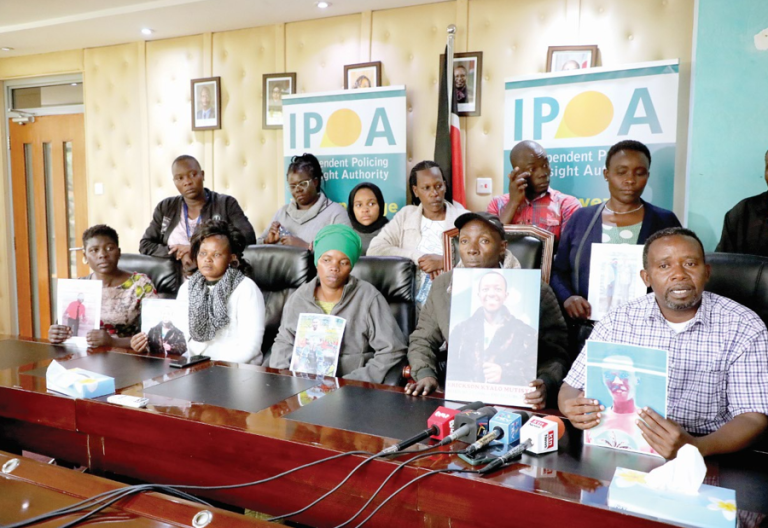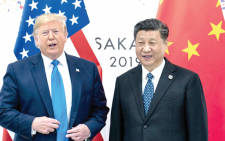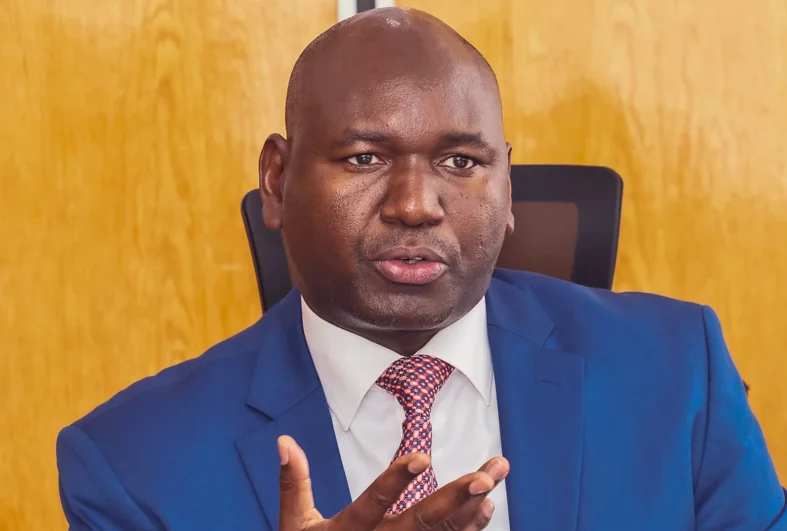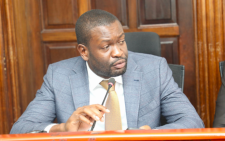How Ruto forces gunned downGen Z protesters

One of three protesters who died during anti-tax protests last June was shot in the head by a Kenya Defence Forces (KDF) soldier as he was leaving the Parliament grounds.
The soldier shot Eric Kayioni Shieni as he was running away, according to a “BBCAfrica Eye” documentary, with Law Society of Kenya president Faith Odhiambo calling the killing unlawful and an unnecessary use of force.
The Constitution explicitly protects the rights to life and human dignity, Odhiambo emphasised to the BBC.
Though the lawful use of firearms or force is unavoidable in certain security operations, firearms can also be used where necessary to confront an imminent threat of death or serious injury.
“You could see he was clearly aiming, meaning he was aiming to kill as a message to them … You have become the judge, the jury and the sentence executioner for Eric,” Odhiambo told BBC.
Single shot
An autopsy revealed that Shieni was killed by a single shot to the head that raptured his brain.
“Analysis of more than 5,000 images also shows that those killed there were unarmed and not posing a threat,” the BBC said.
The University of Nairobi finance student was to graduate in September last year, and had concluded his CPA studies.
The BBC exposé and reports from the Independent Policing Oversight Authority and the Internal Affairs Unit have also revealed how officers go to unimaginable lengths to cover up crimes committed by their colleagues.
In the documentary, a police officer identified as John Kaboi, dressed in civilian clothes, is heard directing his colleague to ‘ua!’ (kill!).
Seconds later, an officer kneels, gunshots are heard and seven protesters in the crowd collapse. Though his colleagues and seniors know he was the one who shot at the crowd, no action has been taken against him.
This conduct by police officers when handling cases against their colleagues – commonly referred to as the ‘blue code of silence’ – has been cited in reports from various agencies and decisions by courts.
Camera metadata
Using over 5,000 photos and videos, the BBC reconstructed those killings, showing what exactly happened and picking out the killers in the crowd.
“The BBC World Service team analysed videos and photos taken by protesters and journalists on the day. We determined when each was taken using camera metadata, livestream timings and public clocks visible in the shots,” the BBC said.
On the fateful day, June 25, anti-tax protesters, mostly young people referred to as Gen Zs, gathered in Nairobi and planned to go to Parliament, where the final vote for the 2024 Finance Bill was taking place.
People were livestreaming the protests on their TikTok and Instagram accounts, while events were broadcast live on national TV.
Despite the growing chaos outside, MPs remained in the chamber and voting began. Around 2.20pm, protesters finally broke through police barricades, got to a road next to Parliament and entered the grounds.
The shooting began and was captured by journalists.
The police officer pointed out as the killer in the documentary had an upturned neck guard and hid his face before firing into the crowd.
President William Ruto – who had on October 20, 2022 said a professional police service could never resort to disastrous policies like extrajudicial murder as part of policing – initially supported the use of lethal force.
“Today, an otherwise legitimate expression of the fundamental rights and freedoms of assembly was infiltrated and hijacked by a group of organised criminals,” the President said.
He added: “Most regrettably, today’s attack on Kenya’s constitutional order has resulted in the loss of lives and destruction of property. I thank our security officers who were on duty today.”
Thorough investigations
The President had always maintained that serious and thorough investigations must be conducted into killings and those found culpable held accountable.
When police officers overstep the bounds of necessity, they are supposed to face criminal prosecution and even civil lawsuits. However, almost one year after the shooting, no action has been taken against the killers of Shieni, Ericcson Kyalo Mutisya and David Chege.
Chege, 39, was a software engineer and Sunday school teacher, while Mutisya, 25, was a butcher.
The ‘blue code of silence’ among security officers has been cited in various court decisions.
In the Criminal Appeal 124 of 2018, Titus Ngamau Musila vs Republic, the High Court said: “The blue code of silence is a common phenomenon spanning across different countries and police cultures…
“It is the unwritten rule according to which police officers never provide incriminating information about their colleagues; to close ranks in silence and to cover up knowledge of a fellow officer’s wrongdoing with a collective blanket of self-preservation.”
Covering up crimes
The board of the Independent Policing Oversight Authority had also stated in a report that non-cooperation by the police service had seen concerted efforts by officers to cover up crimes, with official documents and exhibits being tampered with, shoddy and hasty investigations meant to defeat justice, and even manipulation of arms and ammunition movement register.
Under Kenya’s laws, the degree of force used must be proportional to the gravity of the offence, and the legitimate objective to be achieved, among others.
Under the National Police Service Act, for example, firearms may only be used when less extreme means are inadequate to save and protect the life of an officer or another person.
Firearms can also be used in self-defence or in defence of another person against imminent threat of life or serious injury.











